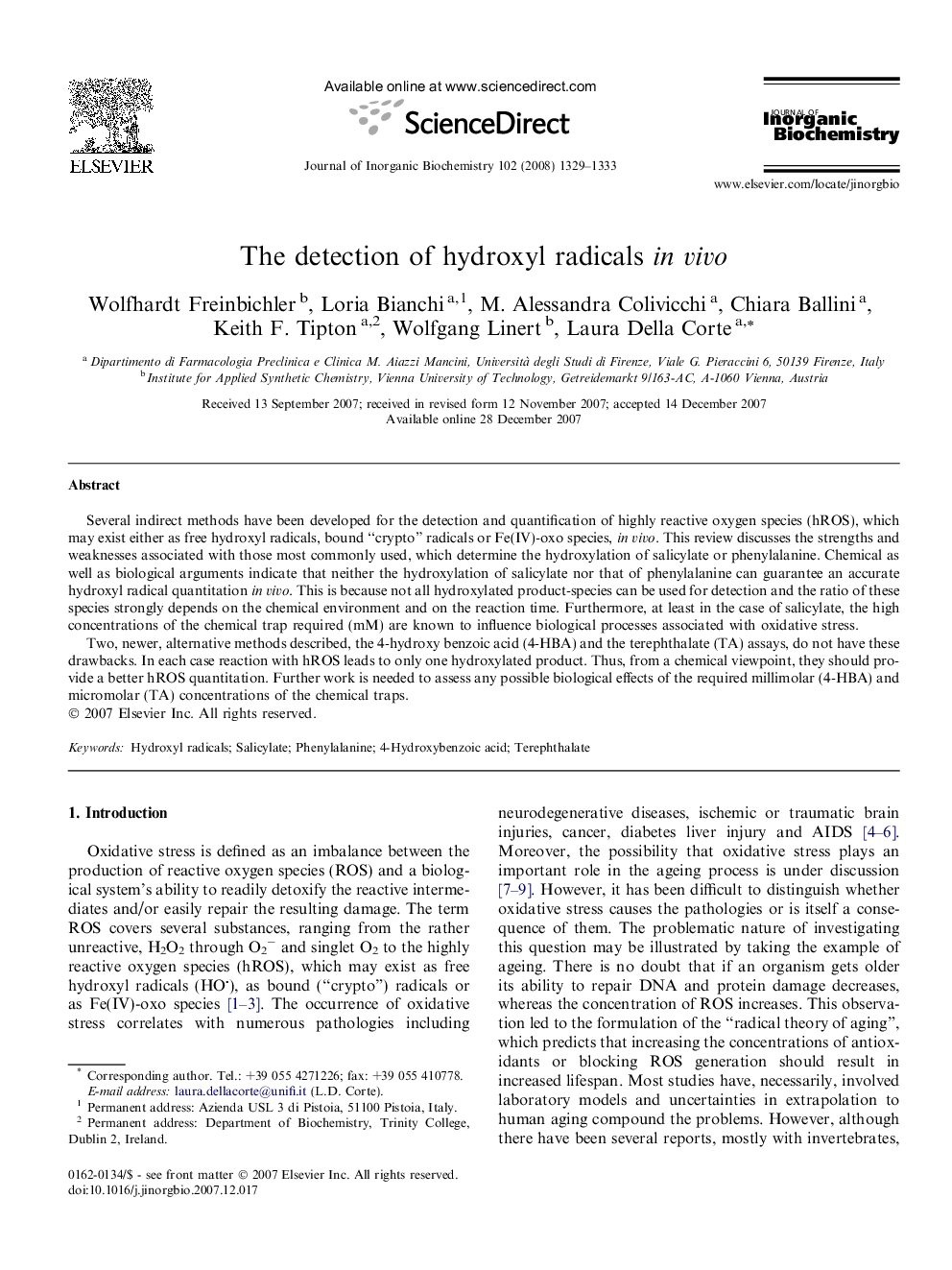| کد مقاله | کد نشریه | سال انتشار | مقاله انگلیسی | نسخه تمام متن |
|---|---|---|---|---|
| 1316608 | 1499480 | 2008 | 5 صفحه PDF | دانلود رایگان |

Several indirect methods have been developed for the detection and quantification of highly reactive oxygen species (hROS), which may exist either as free hydroxyl radicals, bound “crypto” radicals or Fe(IV)-oxo species, in vivo. This review discusses the strengths and weaknesses associated with those most commonly used, which determine the hydroxylation of salicylate or phenylalanine. Chemical as well as biological arguments indicate that neither the hydroxylation of salicylate nor that of phenylalanine can guarantee an accurate hydroxyl radical quantitation in vivo. This is because not all hydroxylated product-species can be used for detection and the ratio of these species strongly depends on the chemical environment and on the reaction time. Furthermore, at least in the case of salicylate, the high concentrations of the chemical trap required (mM) are known to influence biological processes associated with oxidative stress.Two, newer, alternative methods described, the 4-hydroxy benzoic acid (4-HBA) and the terephthalate (TA) assays, do not have these drawbacks. In each case reaction with hROS leads to only one hydroxylated product. Thus, from a chemical viewpoint, they should provide a better hROS quantitation. Further work is needed to assess any possible biological effects of the required millimolar (4-HBA) and micromolar (TA) concentrations of the chemical traps.
Journal: Journal of Inorganic Biochemistry - Volume 102, Issues 5–6, May 2008, Pages 1329–1333